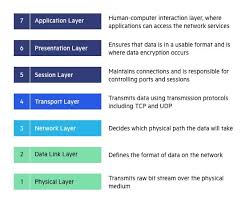Resources & Suggestions
Mains Answer Writing Latest Articles
Daily Answer Writing Practice Questions (24 February 2025)
The rise of the work-from-home culture has brought about several ethical issues in private organizations. In this context, do you believe it is ethical for an employee to engage in moonlighting? Discuss. (Answer in 150 words) घर से काम करने ...
Indo-US Relation: Areas of Cooperation & Conflicts
Key Areas: Defense, technology, trade, energy, and regional cooperation. Key Areas of Cooperation 1. Defense and Security Transition from buyer-seller to co-production and technology sharing. India as a Major Defense Partner (MDP) and inclusion in STA-1. Access to advanced technologies, ...
भारत-अमेरिका संबंध: सहयोग और संघर्ष के क्षेत्र
मुख्य विषय: भारत-अमेरिका संबंधों की मजबूती, विशेषकर रक्षा, प्रौद्योगिकी और क्षेत्रीय सहयोग में प्रगति। सहयोग के प्रमुख क्षेत्र 1. रक्षा एवं सुरक्षा सहयोग भारत और अमेरिका के बीच रक्षा संबंधों का विस्तार। प्रमुख रक्षा साझेदार (MDP) का दर्जा और STA-1 ...

The OSI (Open Systems Interconnection) model facilitates network communication by providing a standardized framework that divides network communication into seven distinct layers. Each layer has specific functions and protocols that contribute to the overall process of transmitting data between devices.
By segmenting communication into these layers, the OSI model standardizes network functions, promoting interoperability and simplifying troubleshooting and development.
The OSI (Open Systems Interconnection) model facilitates network communication by providing a standardized framework that divides network communication into seven distinct layers. Each layer has specific functions and protocols that contribute to the overall process of transmitting data between devices.
By segmenting communication into these layers, the OSI model standardizes network functions, promoting interoperability and simplifying troubleshooting and development.
The OSI (Open Systems Interconnection) model facilitates network communication by providing a standardized framework that enables diverse systems to communicate over a network. It consists of seven layers, each with specific functions that interact with the layers directly above and below them.
Layers and Functions:
1. Physical Layer: Transmits raw bitstreams over a physical medium (e.g., cables, radio waves).
2. Data Link Layer: Manages node-to-node data transfer and error detection/correction (e.g., Ethernet).
3. Network Layer: Handles data routing, forwarding, and addressing (e.g., IP).
4. Transport Layer: Ensures end-to-end communication, error recovery, and flow control (e.g., TCP, UDP).
5. Session Layer: Manages sessions and controls dialogues between computers (e.g., NetBIOS).
6. Presentation Layer: Translates data formats, encryption, and compression (e.g., SSL/TLS).
7. Application Layer: Interfaces directly with user applications, providing network services (e.g., HTTP, FTP).
Facilitation of Communication:
Interoperability: Ensures different hardware and software systems can communicate.
Modularity: Each layer operates independently, simplifying troubleshooting and development.
Standardization: Provides universal guidelines for hardware and software developers, promoting compatibility and innovation.
Layer Interaction: Each layer only communicates with its adjacent layers, ensuring a structured and organized approach to data transmission.
By delineating these functions, the OSI model ensures efficient, reliable, and scalable network communication across diverse systems and technologies.